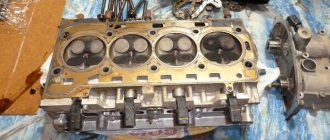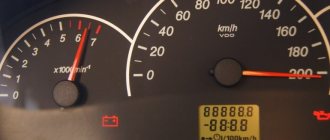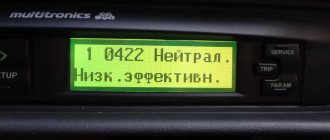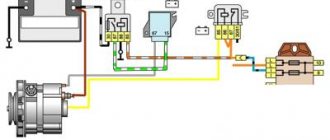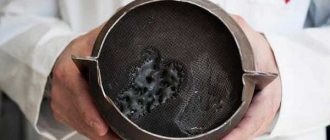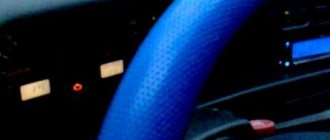Do you experience misfires at idle or under load? Misfire is one of the most common problems when it comes to modern gasoline engines. The spark is critical to the operation of the engine.
There are many reasons that can cause a misfire. They are not easy to eliminate, especially if you don’t know where to look for them.
In this guide, we'll look at the symptoms of misfires, their causes, and how to best troubleshoot them.
What is a misfire?
To know what a skip actually is, we first have to start with the basics of how a car engine works.
Here you can see a good illustration of how the pistons and crankshaft move inside the cylinder when the engine is running. The pistons are pushed down by an explosion inside the cylinder. The piston, moving down, rotates the crankshaft. The operation of an engine can be divided into four stages, which is why this type of engine is called a four-stroke engine.
- The piston moves down, filling the cylinder with the air-fuel mixture from the intake.
- The piston goes up, compressing the air-fuel mixture to high pressure.
- A spark from the spark plug ignites the air-fuel mixture and the explosion pushes the piston down, rotating the crankshaft.
- The piston rises up, squeezing the burnt air-fuel mixture through the outlet.
- Repeat the process from step 1.
This is a description of the operation of a four-stroke engine, which is installed in almost all modern cars. There are some older cars that use a 2-stroke engine, but we won't cover them.
A misfire occurs when one or more of these steps are incorrect or missing.
- The air/fuel mixture is too lean or too rich.
- Bad ignition spark, incorrect ignition timing.
- Low compression, accounting for the air-fuel mixture.
- Incorrect timing of intake or release of the air-fuel mixture.
Now you know the basics of how a cylinder works in a car engine and at what stages misfire can occur. With this knowledge it is much easier to find the reason why misfire occurs.
As you can see, in theory there are not many reasons. But when you start diagnosing your car, you'll realize that it's not always that easy to find the problem. Let's continue to learn how to diagnose and how to fix misfires at home.
Diagnostics and repair
As for finding the reason why misfires occur at idle or when driving in gear, the breakdown is diagnosed as follows:
- It is necessary to check the functionality of the spark plugs. As we have already reported, this problem is common; to determine the condition of the spark plugs, you need to unscrew them and evaluate their condition. If you notice that the candles smell of gasoline, then you need to dry them, find out the reason and get rid of it. It is advisable to check the spark plug not on a hot engine, so as not to get burned, but also not to wait until it cools down, as this will lead to evaporation of fuel. It is necessary to carefully inspect the electrode and the entire structure of the spark plugs for possible damage - if there are cracks, the spark plug must be replaced. If there is carbon deposits on the electrode, it must be cleaned by heating the candle on the stove and cleaning it with fine-grained sandpaper.
- The next step will be to diagnose the condition of the high-voltage wires - you need to check them for damage and breaks, and you also need to check the resistance. As practice shows, the reason is often invisible to the naked eye. However, if there are obvious traces of creases or damage to the insulation on the wires, then this will in any case appear in humid weather or when vibrations occur in the operation of the motor. Damaged wires must be replaced.
- Then the wiring is checked; to identify the fault, you will need a multimeter. To diagnose, you will need to remove the wires from the corrugated hoses and test them one by one for integrity. Please note that a grounded cable may fail when operating in vibration conditions.
- Failure of the knock sensor.
- As for the ignition coil, the reasons why this device may break down usually lie in a broken spark plug or damaged wiring. Since the voltage that forms in the coil cannot be released through the cable or the spark that forms in the spark plug, the coil takes the entire “blow” upon itself. Depending on the design of the engine, the coil may be exposed to moisture, especially in wet weather or when washing the vehicle or powertrain. In this case, the device must be removed from its seat, dried completely (in the sun, without using a hair dryer), and then again checked how the coil works. In cases with an ignition module, this device is structurally composed of two parts. If leaks are recorded in two paired cylinders, and the cables of these cylinders are connected to one side of the module, then the reason is clear (video author - Vassilij Pavliuk).
Separately, we need to focus on checking the compression, since this reason is also common.
You can check the compression using a compression gauge; the diagnostic procedure is carried out as follows:
- First, start the car engine and warm it up to 90 degrees, that is, to operating temperature.
- Then you need to turn off the engine and unscrew all the spark plugs.
- You will need an assistant. For diagnostics, it is necessary that the throttle valve is open. The check procedure is carried out when the starter is turned on by an assistant, and he must squeeze the gas all the way.
- The tip from the compression gauge should be securely inserted into the hole where the spark plug was installed. Make sure the connection is strong enough.
- After this, you need an assistant to turn the starter, this is usually done for 2-3 seconds until the values on the pressure gauge stop increasing. In order to easily measure compression in all cylinders, the car’s battery must be maximally charged.
- After this, the starter device is turned off and the readings from the pressure gauge are read. All cylinders are checked in the same way.
- After checking each cylinder, you must remember to remove air from the compression gauge. If the diagnostics showed different values, which differ from the norm, then you need to check the defective cylinder. The difference in readings should not exceed 10% of the maximum value. If the compression has decreased by 15%, then this indicates wear of the cylinder or pistons, valves or piston rings (video filmed by the channel In Sandro’s Garage).
In the case of a knock sensor, you won’t be able to check this device yourself, since diagnostics will require an oscilloscope. The only option is to buy a new sensor, install it in place of the old one and check how the motor works; if the problems stop, then the reason is clear. An accurate way to determine the malfunction is to conduct computer diagnostics. This task can be performed in vehicles equipped with a control unit. To check, you will need a laptop, and you need to install diagnostic software on it (it is better that the program version corresponds to a specific car).
You will also need an adapter with a cable to connect the computer to the diagnostic connector:
- First, find the connector itself to which you will connect. It is located inside the car, in the center console to the left of the steering wheel, below the instrument panel, under the ashtray or in the glove compartment or behind it. In some cars, the diagnostic connector is located in the engine compartment, check the owner's manual.
- Connect the adapter to the computer, and its second output to the connector in the car.
- Run diagnostic software on your computer. The program interface is different, but after starting the utility you need to find the “Start”, “Start” or “Diagnostics” button. The program may offer to check individual systems, so if possible, select “Engine”, “Ignition” or “Injection System”.
- This will start the verification process, which can last from 10 minutes to several hours. After the diagnosis is completed, the program will issue fault codes that must be deciphered taking into account the make of the car. The decoding of the codes is given in the service book, and descriptions of the breakdown codes are also available on the website. Taking into account the breakdown, identify the malfunction and eliminate it. A malfunction of the ignition system or engine components will be indicated by the Check Engine indicator on the dashboard .
Photo gallery “Computer testing of cars”
Signs of misfire
There are several different symptoms that you may experience when it comes to engine misfire. Here are some of the most common ones.
Uneven acceleration
When a misfire occurs, you may feel it as a slight or strong jolt coming from the engine. These misfires often occur while the engine is running under load and you are accelerating at high RPMs and high gears. Acceleration problems are a common sign that your engine is misfiring.
Unstable idle
Sometimes there will be passes at idle. The engine sensors receive incorrect readings and the air/fuel mixture becomes incorrect. This can result in a very rough idle. The revolutions can fluctuate up and down until the engine stops.
Vibrations
The car engine is balanced at the factory using various balancers to get as little vibration as possible from it. When one cylinder is not firing properly, the engine becomes unbalanced and this can cause severe vibrations in the cabin during acceleration or idling.
Check Engine light on
Modern cars monitor the status of all engine sensors. If the sensor fails or it senses that something is wrong with the engine, it will send information to the control unit. When the ECU receives the data, it will decide whether the problem is serious or not. If the problem occurs repeatedly, the control unit will turn on the Check Engine Light so you can take action.
Slow acceleration
As we said earlier, skipping can cause the oxygen sensors to receive erroneous information and create a mixture that is too rich or too lean.
A mixture that is too lean or too rich can cause sluggish acceleration and even put your car into limp (safety) mode. This will cause the engine to not spin above 3500 rpm and the ECU will turn off the turbo.
Changing the engine sound
If you know a little about cars, you will have noticed that there is a difference in the sound of different engines. V8 engines have a very different tone than a four-cylinder engine.
If your 4 cylinder engine is misfiring in one cylinder, it may sound like a 3 cylinder. If your car sounds unusual, it's most likely misfiring.
Causes of misfires
Now that you suspect a misfire, where should you start looking for the problem? Here are the most common reasons for absences, ranked from most common to least common.
1. Faulty ignition coil or distributor-breaker (distributor)
If you have an older car, this is the most common reason. Some vehicles have a separate ignition coil for each plug, while others have a single coil with ignition cable for each plug.
Older cars have a breaker and in some cases also an ignition coil. If you have separate coils, then disconnect each one to find out which cylinder is misfiring. Replace the faulty ignition coil.
Faulty spark plugs
The second most common cause of misfires is bad spark plugs. Spark plugs ignite the mixture in the cylinders, and they wear out over time. Spark plugs are inexpensive and easy to replace. If you can't remember the last time you changed your spark plugs, it might be time for it.
Intake manifold leaking
Leaks near cylinder heads are also very common when it comes to spark plugs. This problem was common in older cars without steel intake manifold gaskets.
If you have an old engine, you can check this. If you have a new car, check for other signs of leaks around the intake manifold gasket. Check for damaged vacuum hoses.
Low fuel pressure
May be caused by a faulty fuel pressure regulator, faulty fuel pump, or clogged fuel filter. Low fuel pressure will cause the engine to lean, causing misfire in all cylinders. If you have ignition fault codes on all cylinders, check the fuel pressure.
Injectors
Another problem that used to be common was problems with injectors. A faulty fuel injector can cause a misfire.
This is quite difficult to diagnose without checking the injector operation. Injector problems are not common on new cars, so check for other possible causes first.
Low compression/damage inside the engine
If you've checked everything else, you may have low compression or damage inside the engine. A worn timing belt can also cause low compression - check this first.
Messages 1
1 Topic from Denis Artyukhov 2015-11-18 10:20:21 (2015-11-19 15:02:23 edited by Denis Artyukhov)
- Denis Artyukhov
- Local
- Inactive
- From: Penza
- Registration: 2015-10-21
- Messages: 1,392 Thanks : 279
- Car: VAZ 21124
Topic: Main causes of misfires
• Spark plugs: — punctured — with a very large gap — with a very small gap — covered in oil soot and simply of poor quality
• High-voltage wires - with very high resistance - in a break - with an oily surface - physically damaged
• Failed ignition coils or modules: They may fail for the above or other reasons..
• Unevenly flowing (clogged) injectors: This may be a consequence of contamination due to poor quality fuel.
• Uneven Compression: That is, if the compression in one or more cylinders is significantly different from the others, the mixture may not ignite due to insufficient compression of the air-fuel mixture.
• Timing: On eight-valve internal combustion engines, this is an incorrect adjustment (adjustment loss due to wear) of the timing gaps. On sixteen-valve models, the hydraulic compensators are not functioning correctly (leaking).
• Air leaks: This could be “shrunken” injector rings, loose fasteners or a defect in the intake manifold gasket, as well as air leaks through technological holes.
For example, on sixteen-valve ZMZ engines, air leakage may be due to a collapsed RTD hose; on sixteen-valve VAZ engines, the decorative cover mounting studs are not screwed on (cars with an aluminum manifold), etc. DND. If you turn it off or place it vertically (and this is what, for example, some manufacturers of spacers for Kalina cars recommend) you may get misfire errors on or off duty.
For those owners whose cars are equipped with “electronic brains,” the task is slightly simplified with the use of auto testers. These smart guys immediately show us error codes, for example, misfire in cylinder 3 or misfire in cylinder 1. Moreover, the scanner will also reveal the direction of searching for the cause. The scanner showed code P0204, and we believe that this is a faulty injector. And the P0300 code indicates random misfires in all cylinders. And we understand that the composition of the air-fuel mixture is deteriorating. This means you need to look for the cause: high air leaks at the recirculation valve or low pressure due to a weak pump.
If a misfire occurs in a car without an electronic assistant, then the search for the causes occurs using old-fashioned, proven methods. We start with the electrical equipment under the hood: explosive wires, spark plugs, then measuring the compression in the cylinders, the condition of the fuel pump. Already at the last stage, if misfire in the cylinder continues, we proceed to the engine. Removing the valve covers will help diagnose the condition of the rings and valve guides
Source
Is it safe to drive with a misfire?
If a leak occurs, the air-fuel mixture entering the engine will come out unburnt. Modern cars have a catalytic converter that reduces emissions from the car. The catalyst can heat up to 600 degrees during operation.
And what happens when the unburnt air-fuel mixture gets into it? That's right, it will explode inside the catalyst. Explosions inside the catalytic converter can damage it. And a new catalyst is not a cheap pleasure.
In addition, misfires can also damage other sensors in the engine, such as oxygen sensors. We would never recommend driving a vehicle with a misfire, especially over long distances. Short distances to a service station without stress on the engine are normal, but don't ignore gaps and continue driving.
How does the ECU know when misfires occur?
The ECM may detect misfires differently depending on the vehicle model and engine. The ECU uses many sensors to know when to fire the spark plug, when to inject fuel into the cylinder, and how to change the air-fuel mixture. To detect misfires, the control unit often uses a crankshaft sensor.
Engine ECU
The crankshaft sensor measures the position of the crankshaft and calculates its revolutions per minute. The crankshaft sensor uses the camshaft sensor to determine which cylinder is at top dead center and ready to ignite.
Pushing the pistons down causes a slight increase in crankshaft speed. If the crankshaft sensor does not recognize this increase in speed, the engine control unit will store a fault code on the cylinder on which the misfire occurred.
Sometimes the control unit cannot determine which cylinder is misfiring and it stores the error code P0300 (random misfire).
Some ECUs use ignition coil resistance. When ignition does not occur, the control unit understands this through the electrical wiring, which leads to an error. This method is not as common as detection using the crankshaft sensor.
How to detect a malfunction yourself
We also recommend reading our expert’s article, in which he talks in detail about what a contactless ignition system is.
Be sure to read our specialist’s article, which tells you how to set the ignition correctly.
In cars with ECU
In cars with an ECU, troubleshooting is a fairly easy task. To do this, you need to connect an autotester and find the error code. If among the error codes there is an indication of a specific cylinder, then you should pay special attention to the condition of the element. Perhaps the problem is hidden in the armor wires or spark plugs that go to this cylinder. The gaskets may also need to be replaced. If a complex error (p0300) is issued, then you should pay special attention to the quality of the fuel and the filter.
Even domestic cars now have electronic units installed. If the car initially has an ECU, but its performance leaves much to be desired, then you can replace the part at a certified service station. The new “brains” must be compatible with the previous model. Thanks to the new electronic control units, you can easily find misfires in the 1st and 4th cylinders of the VAZ-2114 or on any old foreign car, as well as diagnose the operation of the 2nd and 3rd cylinders without unnecessary hassle.
How to diagnose and fix omissions
If you read the article from the beginning, you now know what can cause gaps. If you came straight to this point, then we will briefly write down the possible reasons for you. Omissions occur when one of the following is missing or occurs at the wrong time:
- Ignition.
- Fuel-air mixture.
- Compression.
To diagnose omissions, we must check everything. But some mistakes are more common than others. Starting in the right direction can save you a lot of time. Let's write a short guide on what to do when trying to find the cause of a misfire.
Reading errors
The first thing to do is read the errors from the ECU. You can do this yourself using a diagnostic scanner or an ELM327 adapter with Torque or ScanMaster software.
If you find errors in the controller code memory, write them down and erase them. We will need them in the next step.
2. Use the information you receive
Now that you know the error code, you need to understand what it says. Further diagnosis depends on this.
Case 1: You have counted many misfire error codes on different cylinders. Additionally, there are errors related to the air-fuel mixture.
For example. If you have two or more of these trouble codes:
- P0171 - lean mixture;
- P0300 - random misfires;
- P0301, P0302, P0303, P0304 - misfires in cylinders 1-4.
In this case, if the engine is running rough or unstable, you should start repairs with the air-fuel mixture. Most likely problems with it are caused by omissions. If you have looked for a code related to the air/fuel mixture along with a skip code, always start your search with the mixture. There are times when mixture errors occur due to omissions, but this happens rarely.
Common causes should be checked. Start with air leaks around the intake manifold and check the hoses for cracks. You can use brake cleaner or "quick start" spray to gently spray around the intake while the engine is idling. If the rpm goes up, there is an air leak. Remember that these sprays burn very easily, so have a fire extinguisher ready just in case.
If there are no intake leaks, the next step is to look into the trouble code related to the air-fuel mixture. You can use Google to find the possible causes of this fault code and how to resolve it.
Case 2: You read a fault code on a specific cylinder again and again despite erasing it
If you're getting an error on a specific cylinder all the time, or just misfire errors with no other associated trouble code, just read on. This problem is much easier to solve. We'll cover this in the next step.
Check ignition
It's time to check the ignition. Because in most cases the problem is caused by a faulty ignition. Here's where we'll start. If you have an older car with an ignition distributor, always start by checking the inside of the distributor. It is often worn out.
If the engine idles rough and if you have an engine with separate ignition coils. You need to start it, let it run at XX, and then disconnect one coil in series. Remember that ignition coils have very high voltage and you must be very careful.
If you disconnect the ignition coil and do not feel any difference in engine performance, you have found a cylinder that is misfiring.
You can use this same procedure with older vehicles that use multipoint ignition. Disconnect the spark plug wires until you know which cylinder is not firing.
During work, you must use insulated tools or protective equipment. If you disconnect wires with your hands without any insulation, you may become exposed to voltage. Always use the correct tools or disconnect wires with the engine off.
Video on how to check the spark:
Now that you know exactly which cylinder is not working, you can change the ignition coil (wires) with the working cylinder. If the problem moves to another cylinder, replace the ignition coil (cable).
If the problem remains on the same cylinder, you can do the same with the spark plugs. Change the spark plugs between the two cylinders. If the problem moves, replace the spark plugs.
Misfires in cylinders 1 and 4 on a VAZ 2112 (2003 Guards; 1.5; 16 cl.)
Help, who can and who has had this happen. After repairing the engine due to a broken timing belt (due to the pump), I drove for about 2 weeks. There were no problems, the car worked like a clock (after the repair I changed the spark plugs and bored the pistons for the valves). At the weekend I went to the lake to relax. I'm driving along the highway at a normal pace. Suddenly the check light comes on and the engine begins to lose power. I look at the on-board fault codes (0301 and 0304 - misfires in cylinders 1 and 4). I lower it from 5 to 4: 80 and it doesn’t go any more. I switch to 3: it stalls. I erase the codes, start it up: everything is fine, it doesn’t “trouble” (unless “doubles”), the engine pulls. I accelerate to 4th gear: “check” and “troit” again. Somehow I get to the gas station, change the spark plugs: no change. On the way back I experienced the same problems until I hit the “!” Overtaking is prohibited under the sign. I followed him for about 5-7 minutes. Some in 2nd gear, some in 3rd. After the sign I decided to try to overtake him. Everything is fine. 3, 4, 5. The car started moving. And this happened several times.
A few days later I come to the service center where the engine was made. I am telling you everything described above. We started to figure out what was going on. We checked the compression: everything is normal; carried out diagnostics: parameters are close to combat parameters, no deviations; The questions were raised by the fuel pump due to low pressure and the ignition module. Changed the MZ, explosive wires, spark plugs are normal. The problems remain the same. A couple of days later I went for another diagnostic at another service center. Compression check again, diagnostics. And everything is back to normal. It was only suggested that the valves were not worn in. But then, probably, there would be passes immediately after the repair, and not after 2 weeks?
In general, the behavior of the car at the moment is this. In XX, 1st, 2nd and 3rd gear the engine works as it should. Even if the “check” comes out, it only gives out codes, and the engine does not “trouble”. When switching to 4, it starts to “triple” in about 4 cases out of 5 (sometimes it starts to “triple” a little later). When downgrading from 4 to 3, it begins to stall, and at xx the car resembles a “mad” jackhammer. I turn it off, start it right away and everything returns to normal. No vibration. Sometimes it starts to “trouble” in 3rd gear at 4000 rpm, but never before this mark or 4th gear. So I drive around the city without problems. But I don’t even want to go to the track.
Does anyone have any thoughts or similar riddles from VAZ.
Source
Conclusion
- Ignition coils and bad spark plugs are the most common problem if you have a misfire.
- Intake leaks are a common problem if you have a trouble code related to the air-fuel mixture.
- If you have an air mixture fault code, always start checking there.
I hope you learned something and solved your misfire problems.
Previous post Idle air control (IAC) - how it works, malfunctions, symptoms, testing
Next entry Error P0339 - what it means, symptoms, causes, diagnosis, solution
